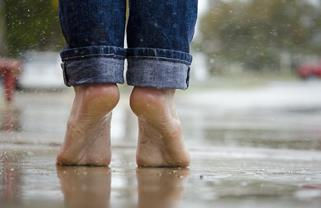Top Health Benefits of Chocolate
- Chin Ling
- Apr 18, 2014
- 3 min read
Updated: Dec 8, 2022
With Easter upon us, it gives us the second best excuse (after Christmas) to gorge on chocolate. If you’re only interested in eating it, then read on to see what health benefits chocolate has. At least you can be slightly guilt-free, knowing that while you’re munching away, some goodness is going into your body.
Flavanols found in cacao are a type of flavanoid that have antioxidant effects and, in particular, can help increase blood flow. Other types of flavanoids are found in fruit, vegetables and certain drinks like red wine and green tea. Research continues to prove that the rich flavanol content of the cocoa bean can be beneficial, for example, it can significantly improve cardiovascular health and help reduce blood pressure (taken from Science Daily US).
Research has also striven to dispel the myths about chocolate. It is not the trigger to various symptoms including acne, allergies and migraine headaches. It does, however, contain caffeine, so a hot chocolate just before bed may not be the aid to a good night’s sleep as previously believed. However, the caffeine content in chocolate is less than in de-caffeinated coffee.
Chocolate does not contain high cholesterol, indeed dark chocolate can reduce LDL cholesterol (Chocolate Manufacturers Assoc). In a study by Holland’s National Institute for Public Health they claimed that chocolate contains up to four times the antioxidants found in green tea, dark chocolate that is. Don’t get too excited though. Chocolate still comes mixed with butters and saturated fats and sugar!

According to the Harvard School of Public Health, consumption of chocolate is linked to longer life. However, they are talking of a few pieces a month. Moderation is key of course. A square of dark chocolate containing at least 50% cocoa solids per day can be beneficial because of the flavanols and its beneficial effects on high pressure and cholesterol. Psychologically, chocolate is a mood-booster. It boosts serotonin and endorphin levels which give you that feel-good factor. Unfortunately, this is actually quite addictive and this is where the “moderation is key” advice can fall on deaf ears.
This is the best bit of all. Research in the Journal of Nutrition (2010) reported that consuming dark chocolate can protect the skin from sun damage, help increase blood flow to the skin and reduce roughness. Again, moderation and good dark chocolate. Dark chocolate is rich in minerals including magnesium, calcium, iron, copper, potassium and zinc, although the levels vary greatly depending on the quality of the chocolate and its manufacture.
Chocolate is a good energy booster. During the Gulf War, a US chocolate manufacturer was shipping out boxes of the stuff to its troops. This had been previously done in WWII. It fed the troops because of its high fat and nutritional content. It may have also helped keep them alert due its caffeine content.
The cocoa bean was originally used for savoury rather than sweet dishes. The ancient Mayans called the plant the “food of the gods” and drew images of the cocoa pod. The Aztecs, as well as the Mayans then enjoyed the crushed beans as a bitter beverage, sometimes flavoured with chilli. They believed it imparted wisdom and mental alertness. To this date, the Mexicans have a famous sauce made of cocoa beans. Called Mole, it is savoury, not sweet. If you ever look for chocolate bars with a high percentage of cocoa, you will see that there is less sugar, cocoa butter and milk than in other bars like milk chocolate and some mass-produced ones. The result is a slight bitterness and when you get to 80% cocoa content, it is quite bitter, hardly sweet and pleasantly FILLING. So, if you come across a recipe that mixes chocolate with meat, don’t turn away in disgust. It could be a stimulating and nutritious meal.
Trivia facts:
1) Switzerland is the #1 country in consuming the most chocolate per person, closely followed by Austria and Ireland. UK is 7th.
2) If you want to indulge in chocolate and alcohol together, the best pairs are white chocolate with champagne or fizzy wine; dark chocolate with red wine.
3) More chocolate is eaten in the winter than in any other season.
4) 66% of chocolate is eaten between meals, while 22% of chocolate is eaten between 8pm and midnight. (Taken from World Atlas of Chocolate.)





Comments